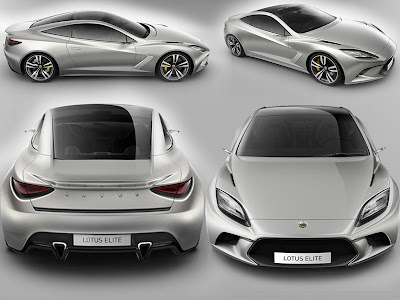To be unveiled at the forthcoming 2010 Paris Motor Show, this new model is an emblem for a state-of-mind and a lifestyle. Clearly alluding to leisure and pleasure, it takes a simplified, no-nonsense approach to motoring - without forgetting refinement - and transports passengers to a lighter, fresher world. With the intention to bring the fashion flair to the Paris Motor show, Citron has tied up with the French fashion house Lacoste to create a funky looking city car concept, Citroën Lacoste. The new concept car is a small buggy that Citroën claims is “stylishly minimalist and elegantly laid back”. Designed as an emblem for a state-of-mind and a lifestyle, according to Citroen, the concept car is devoid of a roof alluding to freedom, leisure and pleasure.
At the crossroads of motoring, fashion and sport, the Citroën Lacoste concept car is a “shared vision of boldness, creativity and optimism” between the French brands, according to the pre-Paris press release. At first glance, the Concept Car - Citroën Lacoste Concept Cars 2010 appears to be a very optimistic car indeed, as it doesn't have a roof to mitigate the inevitability of a bleak French winter.
Pure, simple and laid-back, while remaining sophisticated, the Citroën Lacoste takes another step forward towards the car of the future - a vehicle aimed at putting an end to the "always more" mantra that often reigns in the automotive industry.
The new model also fuels Citroën's thinking of focusing on the essentials to create original cars that are affordable and economical, while losing none of their ambition or motoring passion, notably through premium styling.
Stylishly minimalist and elegantly laid-back, the Citroën Lacoste instantly attracts with its off-beat sports aesthetic. It features a high waistline; bulging and textured wings; minimum overhangs front and rear; and golf ball-style alloy wheels, placed in the furthest corners of the body. After a longer inspection, it is this car's "open" physique that appeals - promising a fulfilling drive, while expressing a wealth of inventiveness and elegance.
Powering the concept uses a small three-cylinder petrol engine with “plenty of performance on tap” according to the press release, as the compact (3.45 m long, 1.80 m wide, 1.52 m high and with a 2.30 m wheelbase) vehicle should be quite light, which, as per the brand, offers enough power to a vehicle of this size and weight.
Among the other styling details there are golf ball-style alloy wheels, a square relief design resembling the sections of a tennis net on many parts of the car, integration of the lights into the bumper instead of the sheet metal and Lacoste covered stowage in its dashboard and under the two bench seats.





Concept Car - Citroën Lacoste Concept Cars 2010














































